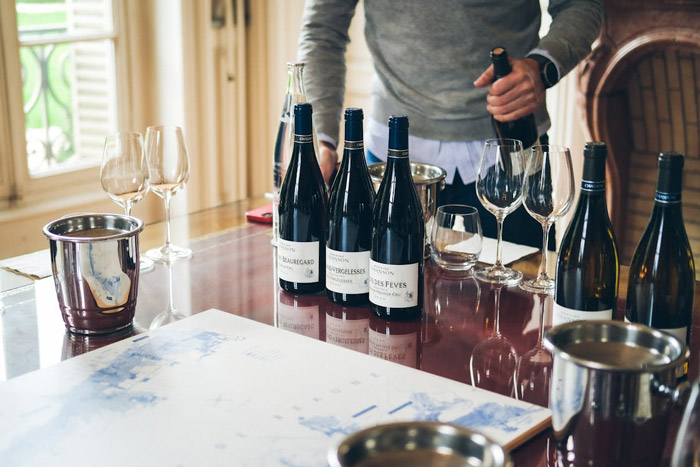When we take a sip of red wine and close our eyes, a rich bouquet of aromas fills our senses. Beyond the deep, fruity essence of the grapes themselves, we might detect the bright freshness of citrus or the sweet richness of vanilla—a magical sensation, like a mysterious rendezvous that transcends the boundaries of fruit. But how can a wine made from grapes alone carry such diverse fragrances? Let us unveil the secrets behind this phenomenon.
The Dominance of Scent: A Fascinating Journey in Wine Tasting
When evaluating red wine, the visual differences—ranging from deep reds to pale whites—are relatively limited compared to other foods. Similarly, the variations in taste and mouthfeel, constrained by grape varieties and winemaking techniques, offer only subtle distinctions. Thus, the sense of smell takes center stage in wine appreciation. Aroma and bouquet are like the soul of wine—not only do they determine much of a wine’s quality, but they also shape each individual’s unique preferences.
The Essence of Grapes: A Natural Treasure Trove of Fruit Flavors
Most of the intoxicating fruit flavors in wine originate from the grapes themselves. Different grape varieties possess distinct flavor profiles, while the ripeness of the grapes acts like a painter’s palette, determining the intensity of these fruity notes.
At various stages of ripeness, grapes emit entirely different aromas—from the grassy scent of underripe grapes to the lush fruitiness of peak maturity, and even the dried-fruit character of overripe grapes. Each carries nature’s unique gift. Occasionally, a wine may exhibit vegetal or green notes, which could stem from insufficient grape maturity or the inclusion of stems during fermentation, lending a distinctive herbal quality.
Modern research has revealed that while different fruits have their signature aroma molecules, many of these compounds are shared across various fruits. Thus, detecting scents like strawberry, citrus peel, or black cherry in red wine may seem mystical, but it is scientifically plausible. However, grape juice itself rarely carries non-grape flavors like strawberry. This is because during fermentation, precursor compounds break down into smaller molecules, while alcohol extracts more non-polar aroma compounds, enriching the wine’s aromatic complexity.
The Magic of Oak Barrels: A Mysterious Vessel for Flavor Enhancement
Beyond the grapes themselves, oak barrels play a crucial role in winemaking, imparting unique notes like vanilla, cream, chocolate, or spices.
American and European oak differ significantly in style. American oak delivers bold vanilla tones, evoking the lush sweetness of a vanilla-scented meadow, while European oak offers more delicate and nuanced layers, like an elegant artist sketching intricate aromatic contours.
Furthermore, the degree of toasting during barrel-making profoundly influences a wine’s flavor profile. Light toasting may introduce subtle woody notes, reminiscent of a quiet forest walk. As toasting intensifies, aromas of pencil shavings, coconut, or toasted bread emerge. Heavy toasting can yield rich, distinctive flavors like caramel, tobacco, or smoky bacon, adding depth and complexity to the wine.
Microbes and Aging: The Unique Flavors of Time
Microorganisms also quietly shape a wine’s character during fermentation, contributing unexpected flavor dimensions. While winemakers typically select neutral yeast strains to preserve the grape’s authentic expression, yeast can still subtly influence the wine’s profile.
During aging, if residual yeast remains in the wine, it may undergo autolysis due to nutrient depletion, imparting bready aromas. This is most evident in traditional-method sparkling wines, where fine bubbles mingle with a distinct toasty richness, creating a memorable experience.
Additionally, beyond alcoholic fermentation, wines often undergo malolactic fermentation to stabilize their structure. Here, lactic acid bacteria convert sharp malic acid into softer lactic acid, reducing acidity while adding yogurt- or cheese-like nuances, resulting in a rounder, more textured palate.
Over time, slow oxidation during aging brings further transformations. In white wines, nutty aromas like almond, hazelnut, or walnut often arise from oxidation. Red wines, with their robust flavors and higher levels of anthocyanins and polyphenols (natural antioxidants), tolerate oxygen exposure better, making oxidative nuttiness less noticeable. However, prolonged aging softens red wines as polyphenols polymerize into larger molecules—a gentle evolution bestowed by time.
Sensory Differences: A Unique Flavor for Every Palate
Each person’s senses, shaped by dietary habits and upbringing, perceive aromas and flavors differently. Thus, the same wine can evoke varied impressions—none right or wrong, simply personal.
The beauty of smell and taste lies in firsthand experience. True appreciation of wine’s diversity cannot be taught; it comes from frequent exposure to different aromas and flavors. Only when you can naturally recall these scents do they truly become part of your sensory memory.
Red wine is like a world of enchanting magic—where grapes, oak, microbes, and time weave a vibrant tapestry of aromas. Each tasting is a journey into the unknown, inviting us to lose ourselves in the endless mysteries behind the enchanting bouquet of wine.

